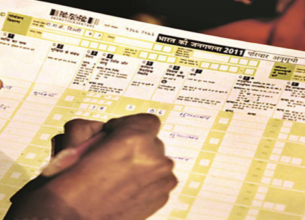Bihar caste Census survey to begin from January 7
07, Jan 2023

Prelims level : Policies
Mains level : GS-II Functions and responsibilities of the Union and the States, issues and challenges pertaining to the federal structure, devolution of powers and finances up to local levels and challenges therein.
Why in News?
- The Bihar government led by Chief Minister Nitish Kumar is to start the first phase of caste based survey in the State from January 7, which will end on January 21.
About the Issue:
- The number of all households in the State will be counted and recorded in the first phase, while in second phase of the survey which is to start from April 1 to April 30, people living in the households, their castes, sub-castes, socio-economic conditions etc. will be collected.
- The decennial census is conducted by the Census Commissioner of India under the Census of India Act, 1948.
- The state does not have the power to conduct a census.
- The states can collect data or headcount of the population for the implementation of welfare schemes or other purposes.
- This may be done either under existing state legislation and rules or new legislation may be enacted under item 45 of List III (Concurrent List) of the Seventh Schedule of the Constitution for socio-economic development of the state.”
- The central government accepted recommendations to use the Socio-Economic Caste Census in 2017:
- It will help in the identification of beneficiaries and transferring of funds for social schemes.
- It aims to bring out the unseen aspects of caste groups and their share in resources.
Why Caste Census is difficult?
- SECC that was first conducted in 2011 and collected data of 130 crore Indians threw up 46 lakh different caste names whereas the total number of castes as per the last caste census of 1931 was 4,147 at the national level.
- Owing to the flaws in the data set, government has refused to make public even the raw caste data of the SECC-2011. The SECC-2011 collected data of all castes and not only OBCs.
- There are separate OBC lists at the State-level and the Centre for reservation in government jobs and education.
What is a Census?
- The origin of the Census in India goes back to the colonial exercise of 1881.
- Census has evolved and been used by the government, policymakers, academics, and others to capture the Indian population, access resources, map social change, delimitation exercise, etc.
- However, as early as the 1940s, W.W.M. Yeatts, Census Commissioner for India for the 1941 Census, had pointed out that “the census is a large, immensely powerful, but blunt instrument unsuited for specialized inquiry.”
What is SECC 2011?
- The Socio-Economic Caste Census of 2011 was a major exercise to obtain data about the socio-economic status of various communities.
- It had two components: a survey of the rural and urban households and ranking of these households based on pre-set parameters, and a caste census.
- However, only the details of the economic conditions of the people in rural and urban households were released. The caste data has not been released till now.
- SECC 2011 was conducted by three separate authorities but under the overall coordination of Department of Rural Development in the Government of India.
- Census in Rural Area has been conducted by the Department of Rural Development (DoRD).
- Census in Urban areas is under the administrative jurisdiction of the Ministry of Housing and Urban Poverty Alleviation (MoHUPA).
- Caste Census is under the administrative control of Ministry of Home Affairs: Registrar General of India (RGI) and Census Commissioner of India.
Difference between Census & SECC:
- The Census provides a portrait of the Indian population, while the SECC is a tool to identify beneficiaries of state support.
- Since the Census falls under the Census Act of 1948, all data are considered confidential, whereas all the personal information given in the SECC is open for use by Government departments to grant and/or restrict benefits to households.
How have caste details been collected so far?
- While SC/ST details are collected as part of the census, details of other castes are not collected by the enumerators. The main method is by self-declaration to the enumerator.
- So far, backward classes commissions in various States have been conducting their own counts to ascertain the population of backward castes.
What kind of caste data is published in the Census?
- Every Census in independent India from 1951 to 2011 has published data on Scheduled Castes and Scheduled Tribes, but not on other castes. Before that, every Census until 1931 had data on caste.
Pros of caste census:
- The precise number of the population of each caste would help tailor the reservation policy to ensure equitable representation of all of them.
Concerns associated:
- There is a possibility that it will lead to heartburn among some sections and spawn demands for larger or separate quotas.
- It has been alleged that the mere act of labelling persons as belonging to a caste tends to perpetuate the system.







